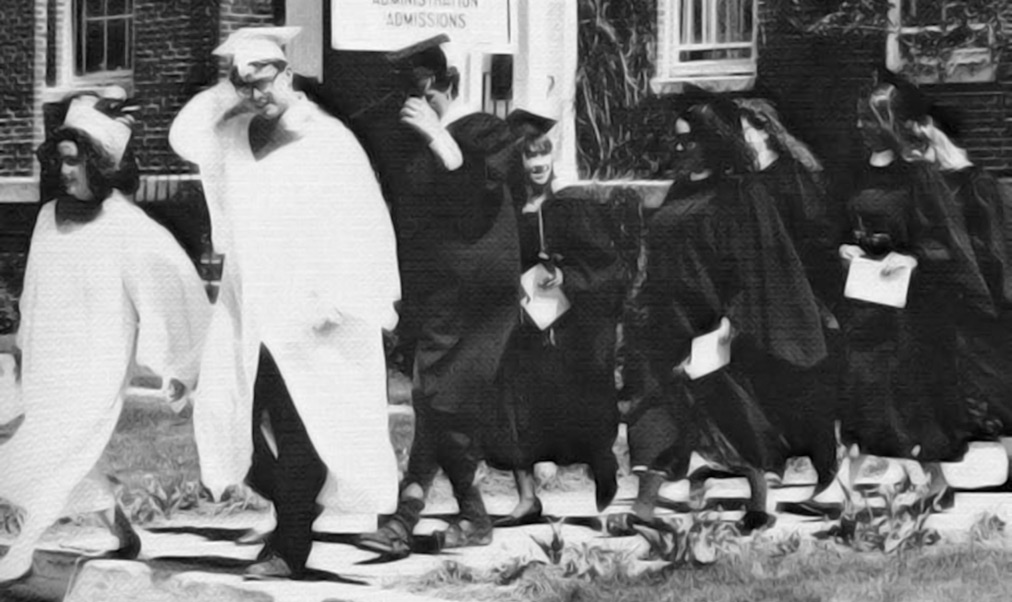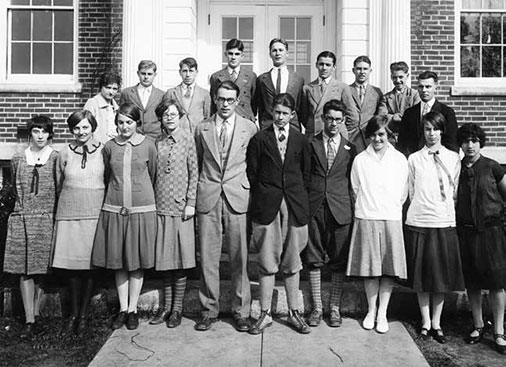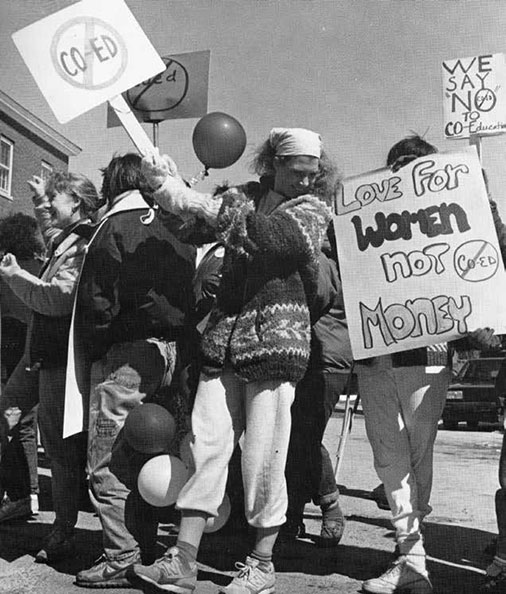
In the fall of 1990, Colby-Sawyer College opened its doors to men and officially became a coeducational institution. Twenty-five years later, it’s hard for our current students to imagine a time when the college wasn’t coed. In 1989, however, when the idea first arose, it alarmed faculty, students, alumnae and even community members. What many didn’t realize was that this was not the first time the institution had reinvented itself, nor would it be the first time male students had been a vital part of the institution.

What is Past is Prologue
Colby-Sawyer College, founded as New London Academy (and later known as Colby Academy), began as a private secondary school that educated male and female students. It was not until 1928, in the face of financial hardship and education’s shifting landscape, that the institution became a two-year women’s college and changed its name to Colby Junior College for Women. By the 1920s, public high schools had been erected in towns all over the state, decreasing demand for private academies. At the same time, most of the buildings on campus were in disrepair. Colgate Hall was built in 1911, but the institution’s other facilities, still on the Old Campus where the Town Common is now, had been built between 1837 and 1895.
To stay afloat and make repairs, nonessential properties were rented out to help raise funds, and donations were solicited from alumni and friends of the school. The academy managed to postpone the construction of a high school in New London by offering reduced tuition to New London students. Despite these efforts, the school needed to change, though it was hotly debated among academy trustees what that change should be. The academy formed a committee in 1924 to look at all possible options, and in 1927, it decided to turn Colby Academy into an institution for girls that would offer two years of preparatory school and two years of college, beginning with the fall term in 1928. Despite their unanimous decision, the trustees, most of whom were academy graduates, had mixed feelings about the change. Some alumni said they could never feel as if they belonged to a girls’ school, but in the end, the difficult decision proved to be the right one for the institution. Colby Junior College for Women grew into one of the premier two-year women’s colleges in the country. It thrived under its new identity and five buildings were constructed over the next 10 years to accommodate students.

The More Things Change…
In the 1980s, the college found itself in a situation remarkably similar to its 1920s predicament. With a student body of only 450, the institution confronted the daunting task of increasing enrollment in the face of a number of challenges that included a decline in college graduates, especially in the New England area; a shift in fields of interest for incoming students; high tuition; and financial aid constraints. As in the 1920s, the institution’s facilities were in desperate need of updating and buildings were sold to help stay afloat. Growth was at a standstill; the newest building on campus was already nearly 20 years old.
There was a sense of déjà vu as the college again faced a difficult decision: Would it reinvent itself or try to survive in its current state? The data the institution had gathered was daunting—statistics showed that between 1979 and 1995, the number of graduating high school students would drop nationally by 23 percent, and that percentage would be even higher in New England. Other data showed that the women’s college market was declining; only 2.8 percent of women were considering single-sex colleges. This drop in graduating high school seniors would hurt all colleges, but administrators felt that Colby-Sawyer College was particularly vulnerable.
In 1986, the college formed a task force to examine the possibility of going coed, and the group began consulting with other institutions that had considered the same option. In the spring of 1989, the school announced to the larger community that coeducation was an option, and it held meetings with all the constituencies to discuss the possibility. Even though it wasn’t uncommon for local male students to attend the college, particularly after it became a four-year institution in 1973, parents, students, faculty and even community members reacted to this possible change with concern. They sent letters to the college, and students staged marches, rallies and sit-ins, shutting down Colgate Hall on several occasions with arguments that admitting men would make women second-class citizens and that the institution would lose its identity.
Ultimately, in April 1989, the college decided to go coed because, as then President Peggy Stock explained, “Parents and their daughters do not believe that women’s colleges can offer the best preparation (academic and otherwise) for career success or the real world.” Or, as one board member put it, “if we make the best buggy whip in the world, what good will it do us if the world doesn’t drive buggies anymore?” In the end, it was a decision for survival, and one that again seems to have benefited the college. In the fall of 1990, just 16 months after the decision was made, 67 men arrived at Colby-Sawyer. The student body rose to 525 members. Although protests had continued through the 1989-1990 academic year, female students welcomed the men when they arrived, and many students who’d protested said that, although they weren’t happy with the choice, they’d grown to accept it. As in the 1920s, this change brought growth and three dorms were built in the 1990s.
Today, Colby-Sawyer College faces new but related challenges to those it has encountered in the past. The number of graduating high school seniors is again on the decline, tuition nationwide continues to rise, enrollment numbers have dipped—and we’re still in a beautiful but rural location. As we face these challenges, it’s helpful to look to at our history of reinvention and know that, as an institution, Colby-Sawyer College is not afraid of change.
by Meghan Burrows ’15 with Kelli Bogan
- Meghan Burrows graduated in May 2015 with a B.A. in creative writing.
- Kelli Bogan is the Colby-Sawyer archivist. She holds a B.A. from the University of Vermont, an M.A. from Boston College and an M.S. (LIS) from Simmons College.


